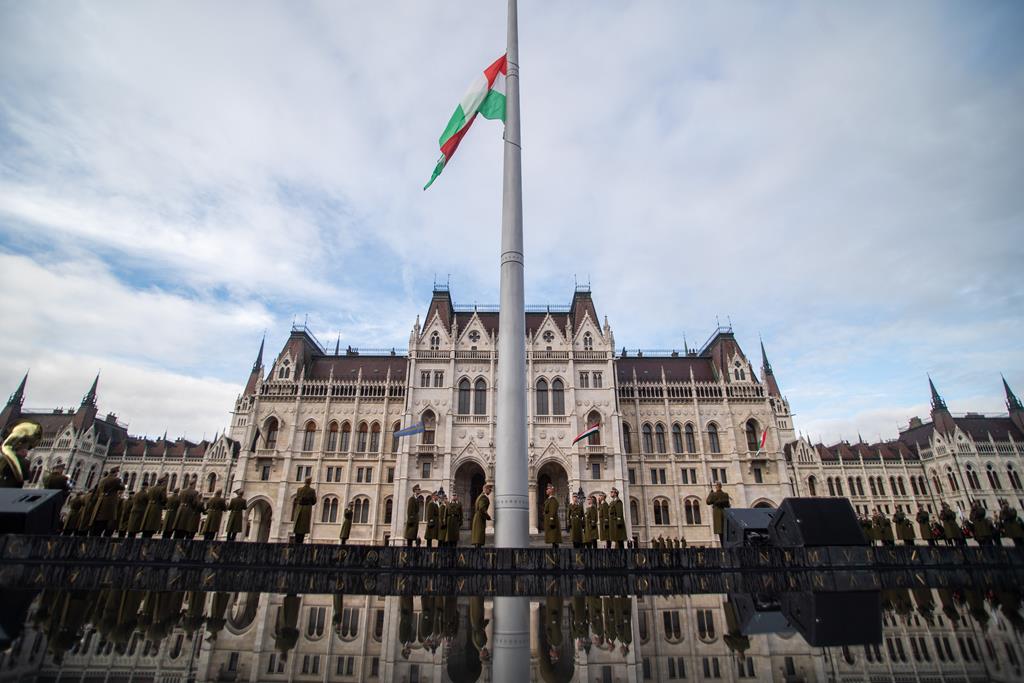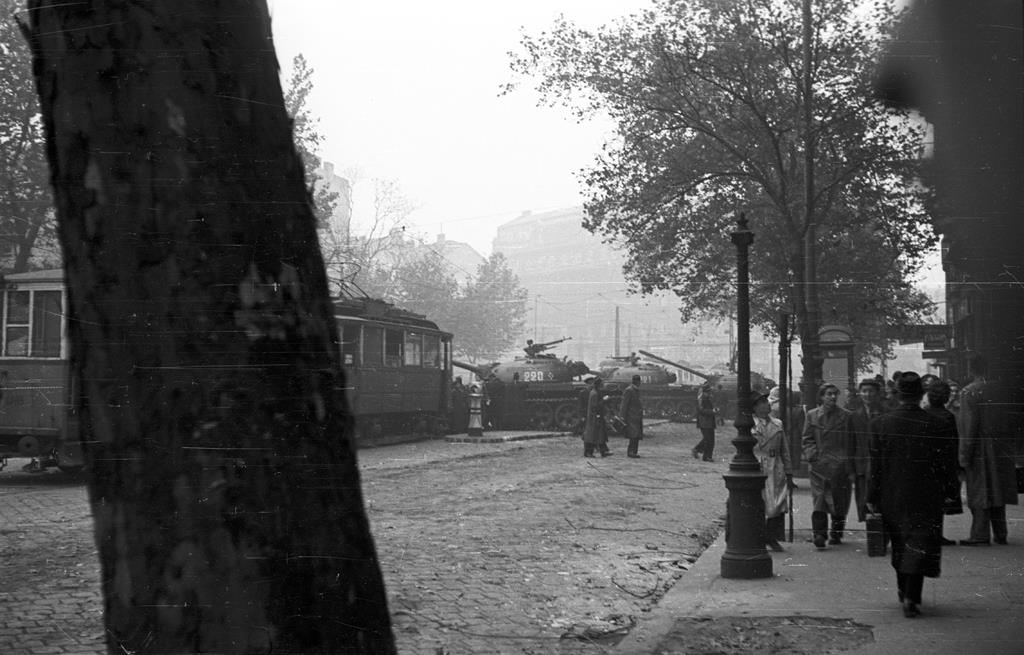Why is today a National Mourning Day in Hungary, symbolised by Russian tanks?
Historians agree that the 1956 anti-Soviet and anti-Communist revolution and freedom fight was the poorest of such movements in the 20th century. Hungarians – mostly young workers in their 20s – wanted a free and independent Hungary not occupied by Soviet forces. Until the end of October, even the leader of the revolution, Imre Nagy, a former Stalinist leader who later joined the reform communists, thought Moscow would let Hungary away from the Eastern Block and join the non-aligned states, including Yugoslavia and Finland. Instead, the Soviet tanks came to crush the revolution of the Hungarian workers and peasants.
The new leaders of the reestablished Communist regime came on the tanks of the Soviet Union but enjoyed disdain. That is because the 1956 revolution was not led by former aristocrats or clerics – as later the Communist historians spread – but by university students, young workers and peasants. Those who were supposed to be the pillars of the Communist regime.
The Rákosi era that started after the Communists destroyed the post-war Hungarian democratic attempt was a catastrophe for almost everybody. The pure Stalinist regime wanted to make Hungary the country of iron and steel without coal, iron and other raw materials. Therefore, the standard of living constantly fell even though people worked a lot.
That is when Imre Nagy, a former Communist leader who took an active part in establishing and running the system for years, sided with the reform movement and became prime minister for a short while. However, Rákosi gained his power again, so the people went on the streets parallelly with the similar Polish movements.
Hungary will be the new Finland?
In end-October, the revolutioners defeated the Hungarian Communist authorities and forced the Soviet army to retreat. However, by 31 October, it became clear that Moscow decided to crush the revolution. That came after the Americans made it clear: they do not consider Hungary as a potential ally. The Soviet Union and the USA parted the world again: Hungary remained in the Soviet sphere of interest. Meanwhile, Moscow withdrew its advisors and weapons from Egypt and let the Western powers deal with the Suez crisis alone.
As a result, the Soviets took away János Kádár and some other Communists and entrusted them to continue to run Hungary as a satellite country of the world power. Kádár, Ferenc Münnich and other said ‘Yes’.
On 4 November, the Soviet attack began, and only the young revolutioners took up the fight. The Hungarian armed forces mostly remained silent. Though fights lasted until 10-11 November (e.g. in Csepel, a centre of Hungarian industry and workers), the well-trained and supported Soviet troops reconquered the country quickly.
Hungarian flag on half-mast today, marking the Soviet crush of the 1956 October revolution and freedom fight:

But they could not break the will of the Hungarians. Workers’ councils were formed continuing resistance, and they were so powerful that even Kádár could not shut them. The people hated him and his new government, protests, strikes and peaceful marches followed.
Prison and wage rise
The new government reacted with a honey and whip strategy. 350 people were executed, including Imre Nagy, 13 thousand Hungarians were put in internment camps, and 22 thousand people were sentenced to prison. 211 thousand people left Hungary, and 170 thousand did not return despite promises of amnesty. They were a huge loss for the economy and the society because they were the shrewdest, most hard-working and bravest citizens. Many countries profited from their work.
Meanwhile, the government provided honey for those remaining here. For example, they considerably raised workers’ salaries. They abolished many unpopular measures of the Rákosi regime and allowed peasants to buy and sell land. They decreased taxes and provided travel discounts for many people. The system punished only those who were active in the armed fights against the Soviet troops.

As a result, on 1 May 1957, they could hold a mass rally to celebrate International Workers’ Day. However, they were not able to reintroduce the Rákosi regime. The Kádár-type compromise between the Communist Party and the people was that the party let people increase their wealth. That meant an increasing standard of living. In that regard, the 1956 revolution was successful: it enabled Hungary to become the “happiest barrack” in the Soviet world, where there was no famine, and people could buy a car or weekend house if they worked hard.
Historians agree that such prosperity could have been reached with much less work under capitalist and democratic circumstances. Furthermore, since Hungarians needed to work a lot but gained little, the number of chronic diseases (heart, cardiovascular, etc) rose, along with depression and suicide. The Kádár compromise remained without the shadow of a doubt two-faced.
Source:






This was a very well written synopsis addressing a lot of important points. As far as the Suez Crisis is concerned that was an Israeli-UK-France co-production with US and USSR pressure forcing the UK and France to back out of their seizure of the canal. The Eisenhower administration was opposed to Israel’s invasion and the attempted canal takeover. I would reject the idea that the US made some kind of tradeoff with the USSR over Hungary. In 1956 it was unrealistic for the US to go to war with the USSR over Hungary. Soviet ground forces at the time were too vast and no one wanted a conflict.
Realistically, US, UK and the rest of European countries never dah any interest in Hungary. In in unfathomable now that the US spend so much time criticizing the country. Hungary, I believe Hungary asked for peacekeepers in 1956 from the UN and not help from unreliable states. The UN then as it is now, was and is useless.
The EU only accepted the Central European nations’ membership, hoping that if Russia decide to attack the EU, they will be held up by the Czech Republic, Slovakia, Hungary and Poland. It will not work. No Central European nation will sacrifice itself and accept destruction to protect German, Holland, France, Belgium, Austria and Luxemburg. In the north, the same thing applies, the coward EU nations rely on Lativia, Estonia and Lithuania, Finland, Norway and Swede.
As in WWI and WWII cowardly Italians, French, Dutch, all gave up and waited for the Brits, Canadians, Americans, Indians, Australians and New Zealanders to liberate them.
Writer was careful not to mention ‘Russia’ and past decade’s links which are contrary to the outlook of most Hungarians, local or diaspora?